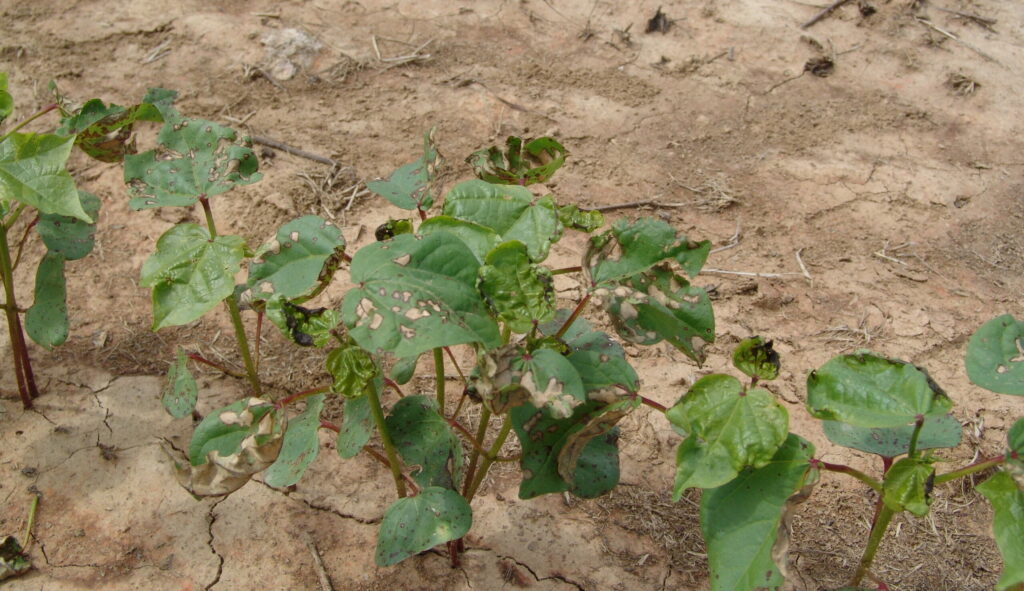
Weather permitting, this week will be the start of the early POST applications in cotton. These applications are often critical to not only curtail weed competition but to combat thrips injury as well. The biggest concern with these applications is injury to the young cotton plants. Traditionally, the main pesticides applied are a mixture of glyphosate plus either Dual, Outlook or Warrant plus Intrepid Edge or acephate. Those herbicides which contain a good surfactant in glyphosate with the oil formulations of the chloracetamide herbicides will always burn young cotton leaves. The typical cotton injury from those mixtures will range from 10 to 20% (Picture 1).
However, in recent years, more injury is seen from adding dicamba to this tankmix in Xtend cotton. My experience has been to expect another 5 to 10% injury when XtendiMax or Engenia is applied in a mixture with the herbicides mentioned above.
A notable change from past years with this application is the switch from acephate to Intrepid Edge for thrips control. It is highly recommended to use a surfactant with Intrepid Edge if applying alone. However, additional surfactant is not necessary if applying Intrepid Edge with either glyphosate or Liberty. See Dr. Browns’ blog on thrips control in cotton for further information.
On top of the typical cotton injury seen with these tankmixtures, all the scattered showers in the forecast for the next 10 days can cause frequent weather delays where sprayers are often sitting loaded for days. Herbicides like Dual, Outlook and Warrant are prone to settling to the bottom of the spray tank. Then when the sprayer is cranked up and the application begins, a very stout rate of chloracetamide herbicide will be sprayed for a good part of the tank load. This can cause extreme burn. So what is the answer to this problem? The best solution I have learned from a very experienced sprayer operator is to spend a good while re-agitating the tank. Then when you think you have done it long enough, spend a good bit more time agitating the tank.
Weather delays can cause problems in more ways than one. Some applicators in a hurry to load a sprayer will add multiple herbicides, adjuvants, and often insecticides all together into the induction tank with no water. If pumped directly into the spray tank in one big glob, they often will not disperse in the tank but settle to the bottom. All those products settled at the bottom are the first to be sprayed and at a much higher rate than intended resulting in injured cotton for much of that load.
In our research we do not see as much injury as what may be seen in the field as we mix them one at a time in water. That would be the solution here as well. Load some water, then each product into the spray tank one at a time instead of mixing all the products together by themselves then putting them into the sprayer tank in one big batch.

